Union Education Minister Ramesh Pokhriya ‘Nishank’l launched the “MyNEP2020” Platform of NCTE Web Portal. The platform will be operational from 1st April 2021 to 15th May 2021.
“MyNEP2020” invites suggestions, inputs and membership from the stakeholders for preparing a draft for development of National Professional Standards for Teachers (NPST) and National Mission for Mentoring Program membership (NMM).
This exercise of digital consultation envisages the participation of teachers, education professionals, academicians, & other stakeholders in preparing the documents on teacher policy for sustainable and positive change in the Teacher’s Education Sector.
To prepare the documents on above two major recommendations of NEP 2020, NCTE will work in close consultation with individuals and organizations.
Expert committee will extensively review the inputs collected during the consultation period and then formulate the Drafts for public review.
Comments by the reviewers from the stakeholders will then be used to prepare a final Draft for notification.
NEP to build foundation for Atmanirbhar Bharat
The National Education Policy (NEP) 2020 is believed to build strong foundations for an Atmanirbhar Bharat.
Union Education Minister Ramesh Pokhriyal has said that NEP will build strong foundations for an ‘Atmanirbhar Bharat’ and help India claim its status as a ‘Vishwaguru’.
NEP was formulated after holding broad-base and wider consultations with every stakeholders, including teachers, students, academicians, parents and students among others.
This new policy is based on firm foundations of equity, quality and accessibility.
The New Education Policy was launched by the Union cabinet in July 2020 with an aim to universalize education from pre-school to secondary level.
NEP imparts vocational education from class 6 onwards, progress card in place of report card, 5+3+3+4 structure, multidisciplinary education with easy entry/exit options and academic bank of credit.
Indian Languages: Cultural Exploration on verge of Extinction
Prime Minister Narendra Modi in his Mann Ki Baat episode lauded the efforts of Sikari Tissau, a resident of Assam who speaks the Karbi language. He is on a mission to document the Karbi language, spoken by the people of Karbi Anglong district in Assam so that it doesn’t get lost in time.
Unfortunately, there are many other Indian languages that have been lying unattended for a long time now and inching towards extinction. There are more than 7,000 living languages in the world, of which 3,000 are sadly considered endangered.
India is a diversified country with its population speaking more than 22 scheduled languages. According to the 2011 Census report on Languages and Mother Tongue, India has 121 recorded languages and 19,569 raw mother tongues. This variety in languages plays a vital role in the cultural formation, its practices, ethnic identity, and social integration of a community or society. The extinction of one language could result in the loss of one culture, knowledge, and history associated with it.
Indian languages in the endangered list?
UNESCO recognized 42 Indian languages as critically endangered. When a language enters the endangered list, it takes a step towards its extinction. After extinction, worldly knowledge and its existences cease to exist. Existence of several Indian languages like Sikkim’s Majhi, Gujarat’s Sidi, Assam’s Dimsa are also under a threat. Shocking research by the People’s Linguistic Survey of India says that there are just four speakers of the Majhi language, all belonging to the same family! Languages like Asur, Birhor, and Korwa are among UNESCO’s endangered list of languages. According to reports, around 197 Indian languages are already at different stages of extinction.
When does a language become endangered?
According to UNESCO, a language is considered potentially endangered if it is spoken by less than 10,000 people. After the 1971 census, India too decided to exclude those languages from the list of official languages which had less than 10,000 speakers.
In the last 60 years, India has thus lost around 250 languages. This is equivalent to losing 250 Indian cultures and their history. Reading, writing, and speaking contribute to the spread of any language. The more a language spreads, the more people and communities get acquainted with its culture and history. It is hard for a language to survive with no speakers.
Why are languages dying in India?
- Lack of documentation
There could be a number of reasons why regional and tribal Indian languages are on the verge of dying. According to senior journalist and Indian Language activist, Rahul Dev, it is the lack of literature, written and published materials in regional or tribal languages that have led to the loss of these languages. The absence of documentation has disabled the native speakers from passing on their language to their future generation. Proper documentation not just acts as a piece of evidence about its existence but also helps in learning and understanding it in its true and correct form.
- Migration
Language knows no boundary. It is said, it changes every 3 km. However, when one has to leave their villages/towns and communities for a living, their language gets left behind too. Migration leads to the lack of communication within the same language.
- Other Factors
Employment, changes in social and cultural values, growth of individualism are some of the factors attributing slowly but steadily to the death of a language. The lack of pride in one’s native language is another reason, adds Rahul Dev. It is not that there is no love for the language but the absence of pride for it in an urban setup is doing damage to our beloved languages.
- Sanskrit’s misery.
- Another reason adding to the misery of tribal languages is the popularity and extensive use of Hindi and English languages. According to the Census of 2011, 43.63% of the total population speaks Hindi while Sanskrit speakers are almost negligible in the country with only 24,821 speakers.
- India’s bit to save its languages
- In 2013, the Scheme for Protection and Preservation of Endangered Languages (SPPEL) by the Ministry of Human Resources Development came out with the objective to document and archive the country’s languages that have become endangered or likely to be endangered in the near future. So far, 117 languages have been listed under the scheme for documentation. This includes Aimol in Northeast Zone, Aranadan in Southern Zone, Baradi in West Central Zone, Bateri in Northern Zone, Birhor in East Central Zone, etc.
- Similarly, the preservation of languages by inculcating them into education seems to be working. According to Director-General, UNESCO, Audrey Azoulay, “40% of the world’s inhabitants do not have access to education in the language they speak or understand best, it hinders their learning, as well as their access to heritage and cultural expressions.”
- – Attempts to save tribal languages
- Mother Tongue Based Multi-Lingual Education (MTBMLE) has helped Odisha-based Kalinga Institute of Social Sciences in preserving tribal languages. The institute has been providing free and quality education from kindergarten to post-graduation for tribal children as education based on mother tongue at an early age can make a huge change.
- – NEP intervention
- The recently passed National Education Policy 2020 stresses huge importance to mother tongue. Under it, mother tongue shall be the medium of instruction up till classes 5. The policy can prove instrumental in promoting and reviving the dying languages in various parts of the country.
- To protect, preserve and stop cultures and traditions from dying, languages need to be taken pride in. In order to bridge any gaps that exist between the language spoken by the child and the medium of teaching, the inclusion of the mother tongue in the academic curriculum not only ensures multilingual education from early childhood but also preserves the said languages which are closer to individual ethnic diversities.




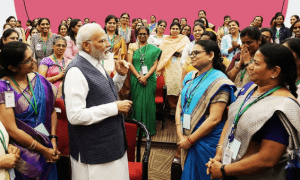





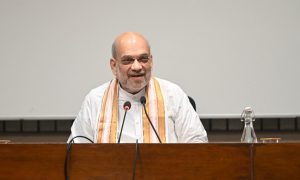



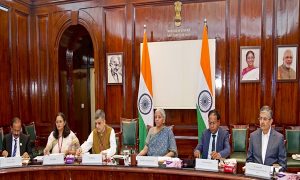

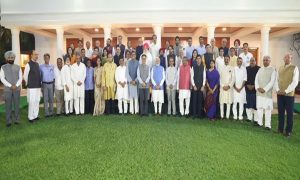



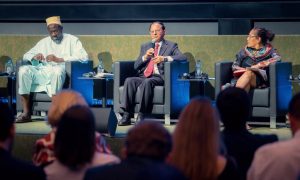

 WhatsApp us
WhatsApp us